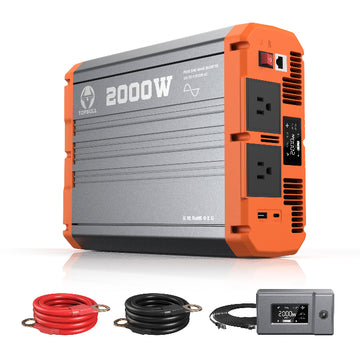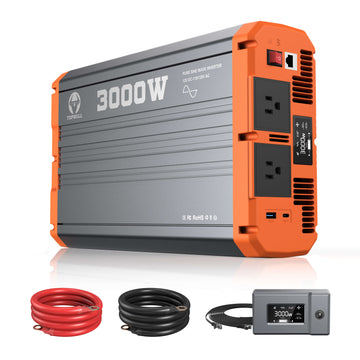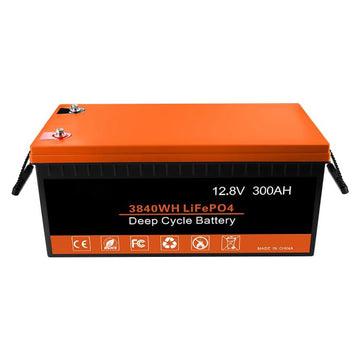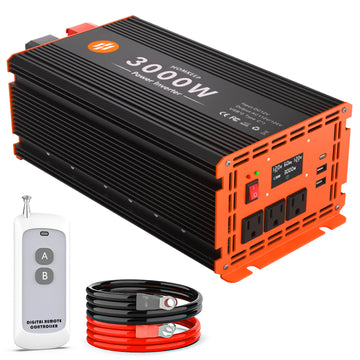Lithium batteries have become the core of modern technology due to their high operating voltage, high battery energy density, long life, and rechargeability. They are widely used in portable electronics and electric vehicles.
However, performance degradation in extreme low-temperature environments challenges these batteries. This has a significant impact on critical areas that rely on Li-ion batteries. Therefore, it is imperative to investigate the low-temperature failure mechanism of Li-ion batteries to improve their low-temperature performance.
This paper summarizes the challenges facing Li-ion batteries, innovations in technology, and concluding thoughts on the potential of low-temperature electrolytes to revolutionize their performance.
The importance of low-temperature performance of lithium batteries

With the booming development of the new energy industry, people are becoming more and more strict about the application range and performance requirements of lithium-ion batteries, which have an operating temperature range of -20~55℃.
When the temperature is lower than -20℃, the cycle stability, service life, and safety of lithium-ion batteries are seriously affected, and it is difficult to work in the low-temperature environment of high-latitude winter, and it is impossible to meet the requirements of energy storage and release in the field of ultra-low temperatures, such as poles and space.
With the increasing demand for batteries that can work stably under low-temperature conditions, improving the low-temperature performance of Li-ion batteries has become a research focus in both academia and industry.
While internal/external heating strategies can improve the stability of Li-ion batteries in cryogenic environments, such solutions often require a trade-off between cost and portability and can reduce the energy density of the system.
Therefore, the development of batteries with inherent low-temperature tolerance has become an urgent need to realize efficient battery operation in low-temperature environments in the future.
Challenges faced by electrolytes in a low temperature environment
The low temperature environment poses significant challenges to the performance and lifetime of lithium batteries, and the performance of the electrolyte as a key component of lithium batteries at low temperatures directly affects the efficiency of the entire battery.

Poor ionic conductivity at low temperatures
Low temperatures significantly reduce the conductivity of lithium ions in electrolytes, which is one of the most significant issues facing low-temperature electrolytes today.
- Impact on energy density
In a low-temperature environment, the viscosity of the electrolyte increases, and the diffusion coefficient of the lithium ions decreases significantly, resulting in a slowing of the movement of the ions in the electrolyte. This phenomenon directly reduces the energy density of the battery, so that the actual capacity of lithium batteries in cold environments is much lower than the nominal capacity at room temperature. This is a serious performance bottleneck for devices that rely on lithium batteries, such as electric vehicles and energy storage systems.
- Impact on charge rate
The limited conductivity of lithium ions also reduces the charge rate of the battery. At low temperatures, rapid charging can cause lithium metal to precipitate on the surface of the electrodes and form dendritic crystals (dendrites), further reducing battery life and safety. Charging rates must therefore be reduced at low temperatures, which is particularly detrimental in scenarios where efficient energy replenishment is required (e.g. electric vehicles in cold regions).
Increase in internal resistance
- Low temperature leads to thickening of SEI film
Under low-temperature conditions, the solid electrolyte intermediate (SEI) film formed on the electrode surface becomes denser and thicker, which increases the difficulty for lithium ions to pass through the SEI film, and thus raises the internal resistance.
The result: lower discharge voltage and lower energy utilization.
- Efficiency impact
Increased internal resistance results in a decrease in the electrochemical efficiency of the battery, especially at high power levels where energy dissipation is more pronounced. This not only reduces the overall efficiency of the device but also causes problems such as overheating.
- Impact on power output
Increased internal resistance limits the battery's ability to deliver high currents at low temperatures, resulting in a significant reduction in the low-temperature acceleration performance of electric vehicles and the load responsiveness of energy storage systems.
Stability and safety issues
The stability and safety of electrolytes are also severely tested at extremely low temperatures.
- Freezing risk
Some liquid electrolytes may freeze or undergo phase separation at low temperatures, resulting in a complete stop of ionic conduction. This phenomenon can cause the battery to completely lose its energy storage function or even be permanently damaged.
- Decomposition risk
Low temperatures may cause the solvents in the electrolyte to decompose or have side reactions with the electrodes, generating unstable chemical products. This reduces battery capacity and may increase internal pressure and even trigger thermal runaway and fire risk.
- Safety challenges
At low temperatures, unstable electrolytes can easily lead to localized overheating of the battery, especially during rapid charging and discharging. This localized overheating can lead to short circuits or thermal runaway, posing safety risks.
Expert Advice: Lithium Battery Use and Storage in Cold Weather
Lithium battery low temperature electrolyte technology innovationlow-temperature
Before 2015, research was mainly focused on optimizing traditional lithium-ion battery electrolyte formulations, with research directions covering solvent systems, lithium salt types, and functional additives. Through these improvements, researchers worked to improve the conductivity of the electrolyte at low temperatures, reduce the viscosity and melting point of the electrolyte, and simultaneously reduce the electrical resistance of each part, to achieve the goal of improving the capacity performance of lithium batteries at low temperatures.
However, since 2015, with the resurgence of lithium-metal battery research and in-depth analysis of the solvation mechanism of lithium batteries, researchers have gradually realized the importance of the desolvation process for low-temperature performance. Focusing on this key relationship, scientists have developed electrolytes with special solvation structures to reduce the hindrance of the desolvation process under low-temperature conditions, thus improving the low-temperature performance of batteries.
In recent years, the focus of research has gradually shifted from the sole pursuit of improving low-temperature capacity performance to the realization of efficient, stable, and long-lasting low-temperature charge/discharge cycles. With the deepening understanding of the charge transfer mechanism of lithium ions in lithium batteries, it is expected that more electrolytes with unique properties will emerge in the future, further expanding the prospects for lithium batteries in low-temperature environments. However, the current research on low-temperature lithium battery electrolytes is still in the primary stage, far from reaching a comprehensive solution.
The design of the low temperature electrolyte alone is not enough to achieve a truly efficient low temperature lithium battery. The nature of the electrode material and its interface with the electrolyte also has a significant impact on low temperature performance. Therefore, the development of low-temperature lithium batteries must be based on several aspects, including the optimization of the low-temperature electrolyte, the improvement of the electrode design, and the adjustment of the interface structure. From the physicochemical properties of the electrolyte, the solvation structure, and the performance of the interfacial passivation layer, to the synergistic effect between the overall structure of the battery, the overall performance of lithium batteries in the low-temperature environment can be improved more efficiently through all-round design and regulation.
Future application of low-temperature lithium battery
With the continuous development of cryogenic lithium battery technology, its application areas will gradually expand in the future and play an important role in various industries. Cryogenic lithium batteries are not only critical for demanding fields such as electric vehicles, aerospace, and defense, but will also provide strong support for renewable energy storage, especially in extreme climatic conditions.
Electric vehicles in cold climates
Electric vehicles (EVs) face unique challenges in cold climate applications, where low temperatures can lead to reduced battery capacity, slower charging, and even battery damage. Extending the driving range and performance of EVs in sub-zero environments has therefore become a key objective in the current development of low-temperature battery technology.
- Extending the driving range of electric vehicles
Under cold climatic conditions, the internal resistance of the battery increases, leading to a reduction in the energy output of the battery, which in turn affects the range of electric vehicles. By improving the low-temperature electrolyte and optimizing the battery design, the driving range of electric vehicles in low-temperature environments can be effectively extended.
- Improve Charging Efficiency
Highly efficient low-temperature electrolytes also ensure fast charging in cold environments, reducing the inconvenience of long stops for charging.
- Enhanced overall performance
In order to ensure that electric vehicles can still operate stably in extremely cold weather, the performance of cryogenic lithium batteries must be optimized, including the thermal management system of the battery as well as the improvement of charging and discharging performance.
Aerospace and defense
Aerospace and defense often require equipment to operate in extreme temperatures, especially at high altitudes or in cold environments. As a result, these fields place higher demands on battery reliability and stability.
- High reliability in extreme conditions
Batteries used in aerospace and military applications must be able to withstand extreme temperatures, vibration, and radiation. The advent of cryogenic lithium batteries provides reliable power support for these applications.
- Powering critical systems
Electronic systems, sensors, and communications equipment in aerospace vehicles and military equipment, among others, often rely on stable battery performance to ensure mission success. As a result, the reliability and high energy density of cryogenic batteries have become key requirements.
- Technology upgrade
With continued research into cryogenic battery technology, future aerospace vehicles and military equipment will be able to maintain high performance over a wider range of temperatures, improving the overall operational capability and long-term reliability of the equipment.
Renewable energy storage
Cryogenic electrolytes are not only critical to the electric vehicle and aerospace sectors but will also play an important role in renewable energy storage and grid solutions.
- The role of cryogenic electrolytes in stabilizing grid storage solutions in different climates
Renewable energy sources such as solar and wind are often affected by weather and seasons, resulting in erratic power output. To address this issue, cryogenic lithium batteries can stabilize energy storage in cold climates to ensure stable grid operation.
- Improving battery stability in extreme environments
The optimized cryogenic electrolyte ensures that the battery maintains high energy density and low internal resistance in a low-temperature environment, providing stable and reliable energy storage. This is especially important for powering remote areas or cold climates.
- Improve overall grid performance
Low-temperature lithium batteries can support rapid discharge of the grid during periods of high demand, ensuring stable input of renewable energy and reducing reliance on traditional fossil energy sources, helping to promote the global energy transition.
Lithium batteries with excellent quality even in cold weather

Topbull offers a wide range of high-quality lithium batteries, and you can get extra savings when you order now!
















